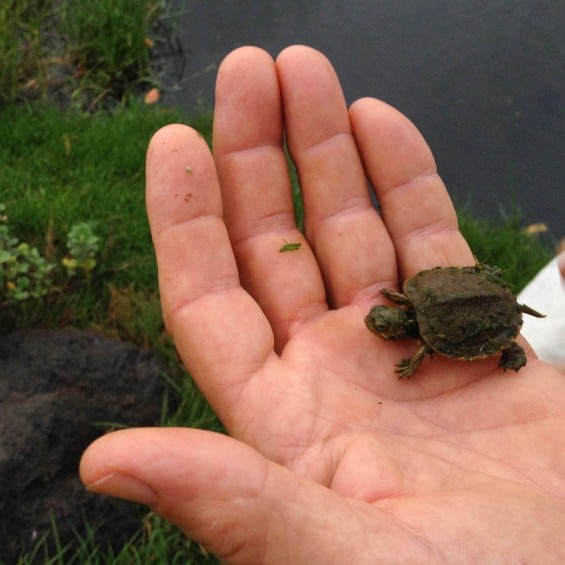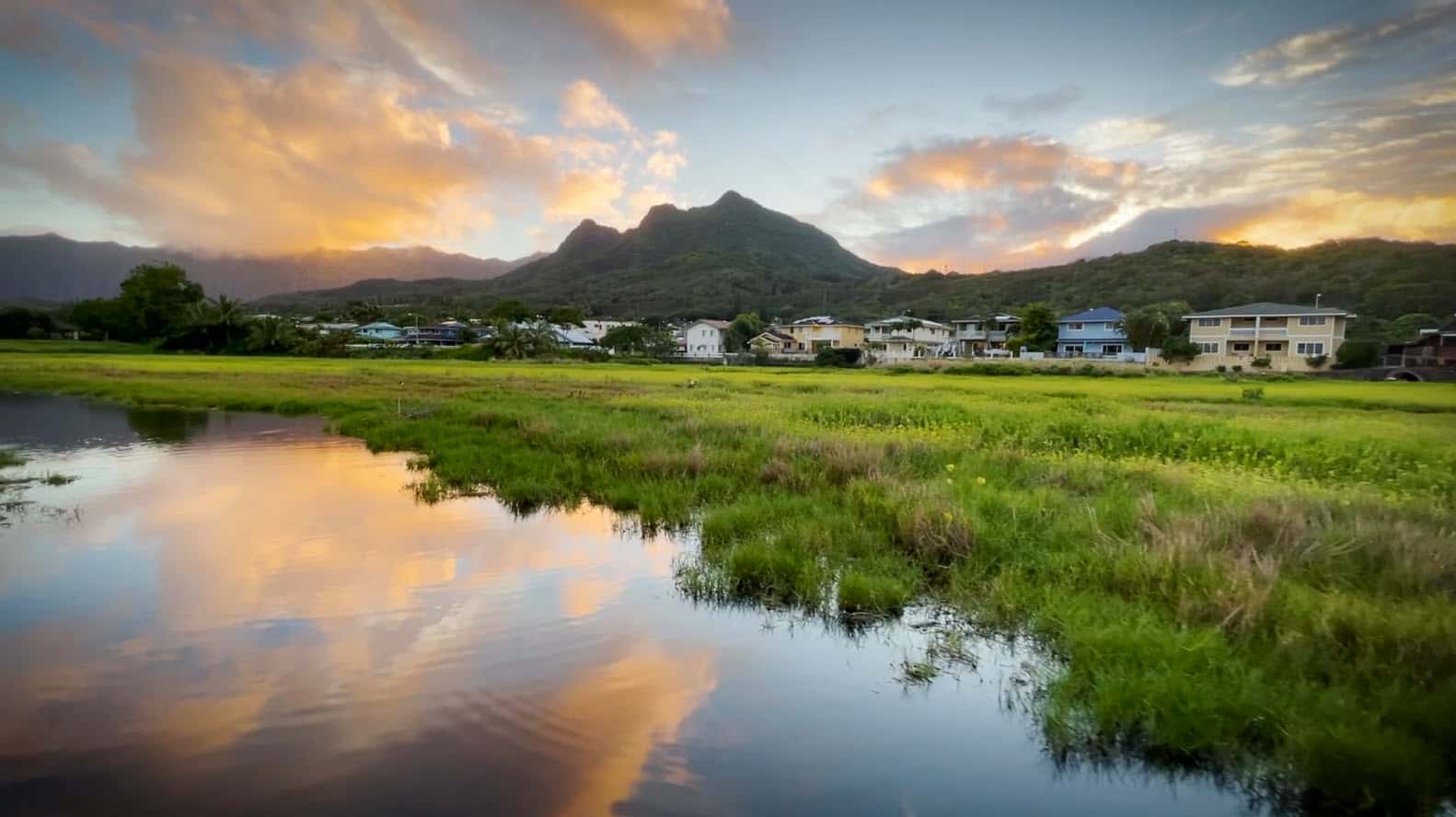About the Wetland
This privately owned wetland was created in 1995 to provide habitat for native Hawaiian waterbirds and migratory birds like the Pacific Golden Plover.
Ongoing work in the wetland includes removing invasive plants, predator control, enhancing nesting and feeding areas, and keeping the waterways open.
The cleared bare dirt areas of the islands provide nesting and foraging areas for stilts. The thicker vegetation on the islands provides cover for shy gallinules (also known as moorhens).
Look for coots feeding and nesting in the grassy edges of the islands. Dozens of coots can often be seen floating and feeding in the shallow lake water beyond the wetland islands.

Fish & other wildlife in the wetland
Tilapia (both gray and orange), juvenile mullet, western mosquitofish, Samoan crabs, and glass shrimp live in the brackish water of the wetland. Milkfish and barracuda can be found in the saltier waters of the lake. Click here for more information about the fish. Dragonflies and smaller damselflies can be seen flying near the water or resting on reeds and water plants.
Several species of freshwater turtles, originally from pet stores, are now established in the wetland. The most common variety is the red-eared slider, but there are at least five varieties, including Chinese Softshell and Diamondback Terrapin. They are very shy but can sometimes be seen sunning themselves on bare island edges.
Below is an aerial view of the wetland, and the surrounding area. This is an interactive photo, you can zoom in, and click-and-drag to pan around. There are also tool icons at the bottom of the image, and if you click on the far-right icon, you can see the image full screen.
The interactive image below shows you Kaelepulu Stream, which connects the wetland, and Kaelepulu Pond to Kailua Bay.


